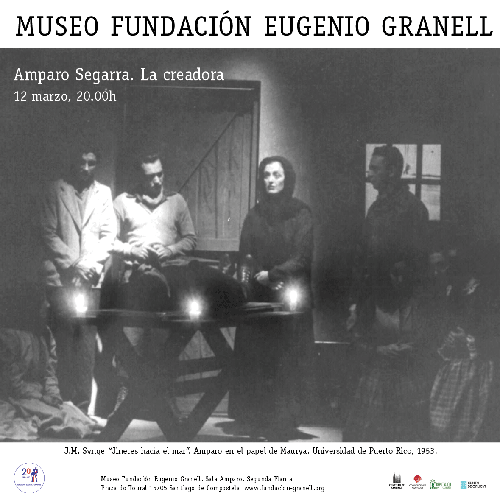
12 March – 21 June
Room Amparo. Second floor
We highlight two periods of rich artistic creation. The first in the 1950s, when Granell was an art lecturer at the University of Puerto Rico. By chance, the many intellectuals that the rector Jaime Benítez managed to bring to his University included Cipriano Rivas Cherif, a renowned theatre director during the happy time of the Spanish Republic. During this fruitful and vital time in Spain, Rivas Cherif had started the TEA, Theatre School of Art, an initiative that, in exile, he repeated in the Spanish-speaking countries where he lived. Amparo and Granell befriended Rivas Cherif in Puerto Rico. Amparo participated in several plays directed by Rivas Cherif and even shared the stage with him in Benito Pérez Galdós Marianela, in the role of Señana.
Eugenio Granell enjoyed the possibility of designing the sets and costumes for Calderón de la Barcas The Mayor of Zalamea, directed by Rivas Cherif for the University of Puerto Ricos Theatre. On that occasion, Amparo made the costumes. She had already done this in the Dominican Republic in La viuda de Padilla, a highly political drama staged in 1942. As we can see in the exhibition, Amparo played important roles in different theatre productions, including the role of Angustias in Federico García Lorcas The House of Bernarda Alba. This premiere was considered the Madrid directors most ambitious outside of Spain. Amparo played the main character, Maurya, in J.M. Synges drama Riders to the Sea,. Among other plays in Puerto Rico, Amparo played the role of virtue in L. Pirandellos Man, Beast and Virtue; and that of Miss X in A. Strindbergs The Stronger.
After moving to New York, in the mid-1950s, Amparo participated in several theatre plays in Barnard College, where various Spanish exiles taught, as well as in Middlebury College, Vermont, where language classes are imparted during the summer. In Barnard, she played the role of Laura in J. Benaventes play Los intereses creados and, with Laura de los Ríos de García Lorca as director, she played Ludgarda in El pobre Valbuena by C. Arniches and E. García Álvarez. She participated in several plays at Middleburg College, but perhaps the most important was El landó de seis caballos, written by V. Ruíz Iriarte; apart from directing the play, she played Doña Adelita. Her husband designed the sets for this play.



